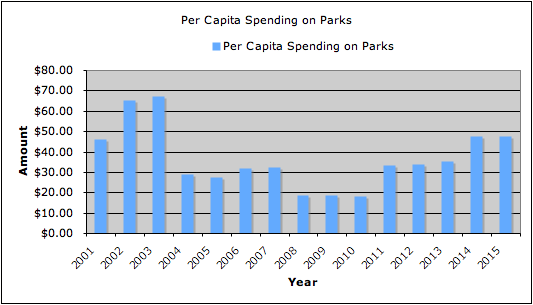THE AMERICAN COLLEGE of Sports Medicine (ACSM) unveiled its seventh annual American Fitness Index™ (AFI) data report. The 2014 AFI data report, “Health and Community Fitness Status of the 50 Largest Metropolitan Areas,” reflects a composite of preventive health behaviors, levels of chronic disease conditions, and community resources and policies that support physical activity.
Capturing the top ranking is the Metropolitan Statistical Area (MSA) of Washington-Arlington-Alexandria, DC-VA-MD-WV, with a score of 77.3 (out of 100 possible points).
The 2014 edition of the AFI data report uses revised methods from the first six full-edition reports released from 2008 to 2013. New variables, including each community’s Walk Score ranking, were added to the 2014 data report.
“Health advocates and community leaders have come to expect the arrival of the American Fitness Index as an annual check-up regarding their community’s health and fitness levels,” said Walter Thompson, Ph.D., FACSM, chair of the AFI Advisory Board. “The AFI data report is a snapshot of the state of health in the community and an evaluation of the infrastructure, community assets and policies that encourage healthy and fit lifestyles. These measures directly affect quality of life in our country’s urban areas.”
The survey looked for the “fittest city,” based on how well the fitness and recreational needs of its residents are being served. In a result that surprised many, the nation’s capitol topped the list as the fittest city in the U.S.
Washington, D.C., vaulted to the top of the American Fitness Index report by the American College of Sports Medicine, knocking Minneapolis-St. Paul off the throne it had occupied in the precious three straight years and down to second place.
The ranking tracks personal health levels by scoring both environmental and community indicators.
“The AFI data report is a snapshot of the state of health in the community and an evaluation of the infrastructure, community assets and policies that encourage healthy and fit lifestyles,” AFI advisory board chair Walter Thompson said.
A panel made up of 26 health experts looked at positive and negative personal health measures such as the incidence of obesity, diabetes or smoking and an average city resident’s consumption of vegetables and fruits.
Then they considered environmental health, as indicated by measures including the number of public parks, dedicated bike lanes and even farmer’s markets.
The top five healthiest cities all recorded obesity rates less than 23 percent and smoking rates below 18 percent.
In the index-topping capitol, 81 percent of people engaged in some kind of physical activity in the last 30 days and fewer than 22 percent were obese, the study found.
Surveying access to parks, the index found Washington spends almost $400 per resident on city parks; in comparison, Memphis —which sits last at number 50 in the rankings—spends just $26 per dweller. Detroit, ranked 43rd in the nation, spends $31 per dweller. The report’s target park expenditure per resident is $101.80.
Ann Arbor spent the most per capita in general fund dollars on parks in 2003. In 2006 and 2012, local voters passed a parks millage which generates between $4-$5 million each year. With the additional money combined with the 2014 general fund allocation, the total spent on parks will be $10,514,406, or $90.57 per resident.
Geographical differences were noted in the index; of the top 10 cities six are on the West Coast, with the Midwest placing just one, and the South coming up empty.
The full list of the top ten comprises Washington on top followed by Minneapolis-St. Paul, Portland, Denver, San Francisco, San Jose, Seattle, San Diego, Boston and Sacramento.
Three cities managed to move into the top 20 in the index for the first time; Philadelphia, Los Angeles and Atlanta. In doing so, they knocked Baltimore, Virginia Beach and Cleveland out of the top 20.
Bringing up the rear at the foot of the list were Oklahoma City, Louisville and Memphis.
The study authors acknowledged the differences between many cities were marginal.
The Wellpoint Foundation provided the funding for the annual fitness investigation.


